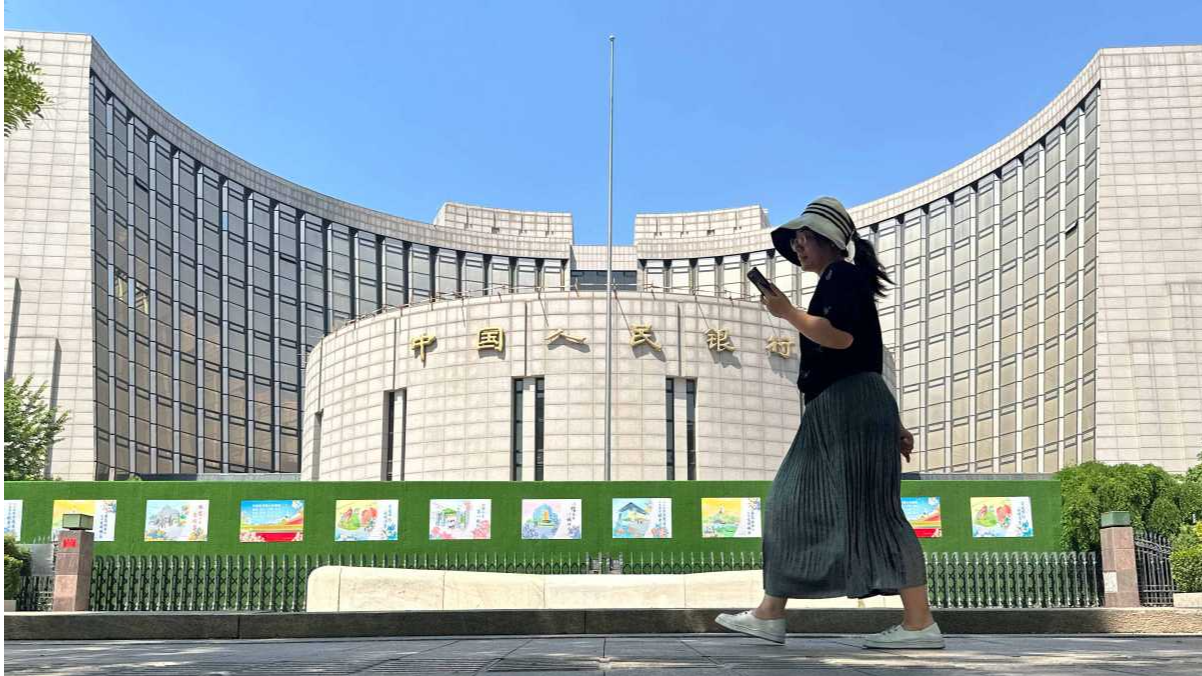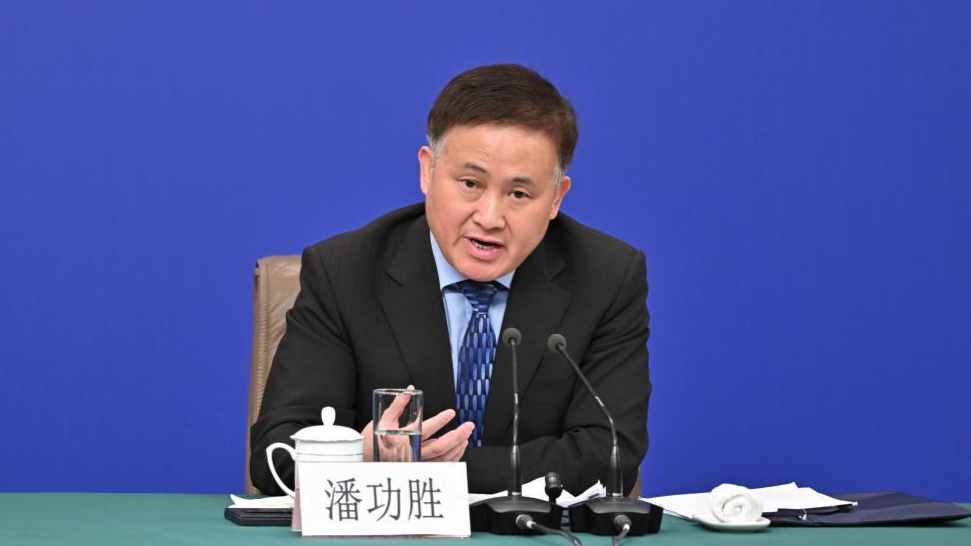
BEIJING - China's central bank on Tuesday unveiled a raft of measures to boost the country's economy, including cutting the reserve requirement ratio and lowering a key interest rate.
Pan Gongsheng, governor of the People's Bank of China, said Tuesday that China will cut the reserve requirement ratio (RRR) by 0.5 percentage points in the near future, providing about 1 trillion yuan (about $141.78 billion) in long-term liquidity to the financial market.
Depending on the liquidity situation in the market, RRR may be further lowered by 0.25 to 0.5 percentage points within the year, Pan told a press conference.
The central bank will also reduce the interest rate of seven-day reverse repurchases from 1.7 percent to 1.5 percent. Pan said the reduction was aimed at guiding the loan prime rate (LPR) and deposit rate to move downwards and maintaining stability in the net interest margin of commercial banks.
ALSO READ: Fed moves set to give PBOC more options
Under the market-oriented mechanism for adjusting interest rates, lowering the rate of seven-day reverse repos, which is a main policy rate for the central bank, will lead to declines in various benchmark rates, he said.
The interest rate of the medium-term lending facility (MLF) is expected to drop by approximately 0.3 percentage points, and the LPR and deposit rates may decrease by 0.2 to 0.25 percentage points, according to Pan.
He also announced that China will lower mortgage rates on existing home loans to a level similar to those of newly issued housing loans.
The average reduction in mortgage rates for existing home loans is expected to be around 0.5 percentage points, Pan said.
"The new policy, which is conducive to further reducing borrowers' mortgage interest expenses, is expected to benefit 50 million households, or a population of 150 million," said Pan.
This move is expected to reduce the total interest expenses for households by approximately 150 billion yuan (about $21.27 billion) per year on average, which will help boost consumption and investment, he added.
The minimum down payment ratio for both first and second homes will be unified, with the nationwide minimum down payment ratio for second homes to be reduced from 25 percent to 15 percent, Pan said.
On May 17, China announced the establishment of a 300-billion-yuan re-lending facility that supports local state-owned enterprises to use those funds to buy commercial homes for affordable housing.

Pan said the PBOC will increase its funding proportion in the affordable housing re-lending policy from the original 60 percent to 100 percent.
"This adjustment will help accelerate the reduction of inventory in the commercial housing market," Pan said.
READ MORE: Asia stocks hit 2-1/2-year high on China's stimulus measures
The governor said the central bank will create new monetary policy tools to support the stable development of the stock market, and establish a swap program for securities, funds and insurance companies to obtain liquidity from the central bank through asset collateralization.
The program will significantly enhance the companies' ability to acquire funds and increase their stock holdings, he added.
According to Pan, eligible companies could use their assets including bonds, stock ETFs and holdings in constituents of the CSI 300 Index as collateral in exchange for highly liquid assets such as treasury bonds and central bank bills. Funds obtained through this tool can only be used for investment in the stock market.
The initial scale of the swap program will be set at 500 billion yuan (about $70 billion), with possible expansions in the future, Pan said.
READ MORE: PBOC measures, US rate cut propel HK stocks
The central bank will also create a special re-lending facility to guide banks to provide loans to listed companies and their major shareholders for buybacks and increasing shareholdings, Pan said.
The initial re-lending will be 300 billion yuan at an interest rate of 1.75 percent for commercial banks, which could lend to their clients at an interest rate of 2.25 percent. Depending on the market conditions, the operation may be repeated in the future, Pan said.
The facility can be applied to various types of companies regardless of their ownership, Pan added.

China also plans to increase the tier-1 capital of six major commercial banks, Li Yunze, head of the National Financial Regulatory Administration, told the press conference.
Li said the capital will be injected in an orderly manner, with coordinated advancement, phased implementation and tailored policies.
Tier-1 capital refers to the core capital held in a bank's reserves, including common stock and disclosed reserves.
READ MORE: New index to help cultivate new quality productive forces
The administration will continue to prompt the major commercial banks to enhance fine management and strengthen their ability to achieve high-quality development under capital constraints, Li said.
In addition, China will issue a guideline to encourage medium and long-term funds to enter the capital market, said Wu Qing, head of the China Securities Regulatory Commission (CSRC).
The guideline seeks to improve the supporting system for the entry of various types of medium and long-term funds into the capital market.
ALSO READ: Shift toward new engines of growth underway
The CSRC will also release six measures to promote mergers and acquisitions, and work with various parties to facilitate the circulation of private equity and venture capital funds in the process of fundraising, investment, management and withdrawal, Wu said.
More efforts will be made to protect the legitimate rights and interests of small and medium-sized investors, and firm actions will be taken to crack down on illegal activities such as financial fraud and market manipulation, according to Wu.



